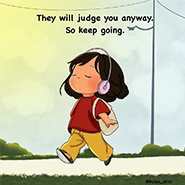From the dawn of human evolution to the fast-paced digital age of the 21st century, dopamine has been the unsung hero shaping our emotions, behaviors, and survival instincts. Often dubbed the "reward hormone," dopamine is a neurotransmitter that influences everything from our prehistoric quest for food to our modern obsession with social media likes. Its role in human physiology and psychology is profound, driving motivation, pleasure, and even addiction. In this comprehensive blog post, we’ll trace dopamine’s journey through human evolution, explore its sources—both natural and chemical—delve into its chemical composition, discuss dopamine injections, examine how it’s naturally produced in the body, and understand why it’s called the reward hormone. We’ll also investigate why daily life in the 21st century often spirals into dopamine addiction, how this leads to a miserable life structure through behavioral changes, strained relationships, and other aspects, and finally, offer actionable strategies to control its effects for a healthier, more balanced future.
Dopamine Through Human Evolution to the 21st Century
Dopamine’s story begins millions of years ago with early humans. During the Paleolithic era, survival depended on hunting, gathering, and avoiding predators. When our ancestors found a ripe fruit or successfully hunted prey, their brains released dopamine, creating a sense of pleasure and reinforcing these life-sustaining behaviors. This reward mechanism was crucial for evolution, encouraging repetition of actions that ensured survival and reproduction. As human societies evolved, dopamine adapted to new contexts—celebrating a successful harvest in agrarian communities or achieving social status in tribal hierarchies.
Fast forward to the 21st century, and dopamine’s role has transformed dramatically. Modern life, with its technological advancements, offers instant gratification through video games, social media, fast food, and online shopping. These activities trigger dopamine releases far more frequently and intensely than our evolutionary ancestors experienced, rewiring our brains to crave constant stimulation. Today, dopamine is no longer just a survival tool; it’s a silent love that drives our desires, decisions, and, unfortunately, our addictions.
Sources of Dopamine: Food, Chemicals, and Beyond
Dopamine can be obtained or stimulated through various sources, each influencing our brain chemistry in unique ways:
1. Dopamine via Food
Certain foods naturally boost dopamine levels by providing the building blocks for its synthesis or triggering its release. Tyrosine and phenylalanine, amino acids found in protein-rich foods, are precursors to dopamine. Examples include:
- Bananas: Rich in tyrosine, bananas support dopamine production and are a quick natural boost.
- Eggs and Poultry: High in protein, these foods supply essential amino acids for brain health.
- Dark Chocolate: Contains phenylethylamine, which mimics dopamine’s effects, enhancing mood.
- Nuts and Seeds: Almonds and sunflower seeds offer tyrosine and healthy fats, supporting neurotransmitter function.
A balanced diet with these foods can sustain healthy dopamine levels, though overconsumption of sugary or processed foods can lead to short-term spikes followed by crashes.
2. Chemical Sources of Dopamine
Beyond natural food sources, synthetic chemicals and drugs can artificially elevate dopamine:
- Caffeine: Found in coffee and tea, caffeine blocks adenosine receptors, indirectly increasing dopamine activity, which explains the alertness it provides.
- Nicotine: Present in tobacco, nicotine stimulates dopamine release in the brain’s reward centers, contributing to its addictive nature.
- Cocaine and Amphetamines: These illicit drugs directly increase dopamine by blocking its reuptake, leading to intense euphoria but severe dependency risks.
These chemical sources offer rapid dopamine hits, often bypassing the body’s natural regulatory mechanisms, which can set the stage for addiction.
Chemical Composition of Dopamine
Dopamine is a catecholamine, a type of neurotransmitter derived from the amino acid tyrosine. Its chemical structure, C₆H₃(OH)₂-CH₂-CH₂-NH₂, consists of a catechol ring (a benzene ring with two hydroxyl groups) attached to an ethylamine side chain. This structure allows dopamine to interact with specific receptors in the brain, particularly D1 and D2 receptors, which regulate mood, movement, and motivation. Synthesized in the brain from tyrosine through a two-step process involving the enzymes tyrosine hydroxylase and aromatic L-amino acid decarboxylase, dopamine’s production is tightly regulated. Its chemical stability and receptor affinity make it a powerful influencer of neural signaling, but imbalances can lead to disorders like Parkinson’s disease (low dopamine) or schizophrenia (excess dopamine).
Dopamine Injections: Medical Applications and Risks
Dopamine injections are used in medical settings to treat specific conditions rather than as a recreational drug. Administered intravenously, synthetic dopamine is employed to:
- Manage Shock: In cases of low blood pressure (e.g., septic shock), dopamine increases heart rate and blood flow.
- Treat Parkinson’s Disease: In early stages, dopamine agonists mimic its effects to alleviate tremors and rigidity.
However, dopamine injections are not a cure-all. They carry risks such as irregular heart rhythms, nausea, and potential addiction if misused. Unlike natural production, injections bypass the brain’s regulatory systems, leading to side effects like anxiety or hallucinations. Medical use is strictly controlled, highlighting the need for natural alternatives.
Creation of Dopamine in the Human Body Naturally
The human body produces dopamine naturally through a complex biochemical pathway in the brain and nervous system:
- Precursor Synthesis: Tyrosine, obtained from dietary protein, is converted into L-DOPA by the enzyme tyrosine hydroxylase, a rate-limiting step requiring vitamin B6 and iron.
- Dopamine Formation: L-DOPA is then decarboxylated by aromatic L-amino acid decarboxylase into dopamine, primarily in the substantia nigra and ventral tegmental area of the brain.
- Regulation: Dopamine levels are modulated by reuptake mechanisms and degradation by enzymes like monoamine oxidase (MAO), ensuring a balance between reward and homeostasis.
Physical activities like exercise, adequate sleep, and exposure to sunlight enhance this natural production by stimulating tyrosine availability and reducing stress hormones that inhibit dopamine synthesis. For example, a 30-minute jog can increase dopamine by 50-60% temporarily, improving mood and focus.
Why Is Dopamine Called the Reward Hormone?
Dopamine earns its title as the "reward hormone" due to its role in the brain’s reward system. When we accomplish a goal—whether it’s eating a meal, winning a game, or receiving praise—dopamine is released in the nucleus accumbens, creating feelings of pleasure and satisfaction. This release reinforces the behavior, encouraging repetition. Evolutionary biologists argue this mechanism evolved to motivate survival behaviors like eating or mating. In modern contexts, the reward system is hijacked by artificial stimuli—social media notifications or video game achievements—triggering dopamine spikes that condition us to seek instant gratification.
Dopamine Addiction in Daily Life: The 21st-Century Trap
In the 21st century, the constant availability of dopamine-triggering activities has led to widespread addiction. Unlike our ancestors, who experienced dopamine releases sporadically, we now face a barrage of stimuli:
- Social Media and Gaming: A "like" on Instagram or a level-up in a game releases dopamine, conditioning users to check phones compulsively—studies show the average person checks their phone 96 times daily.
- Fast Food and Sugar: High-sugar, high-fat foods cause dopamine surges, leading to cravings and overeating, with 30% of adults in urban India showing signs of food addiction.
- Work and Productivity Hacks: The pressure to achieve quick results (e.g., inbox zero) triggers dopamine, but the cycle of overwork leads to burnout.
Over time, the brain adapts by reducing dopamine receptor sensitivity, requiring more intense stimuli to feel the same pleasure. This desensitization marks the onset of dopamine addiction, where daily routines revolve around chasing the next high.
How Dopamine Addiction Leads to a Miserable Life Structure
Dopamine addiction transforms life into a cycle of misery, affecting behavior, relationships, and overall well-being:
1. Behavioral Changes
- Impulsivity and Procrastination: Addicts seek instant rewards, delaying important tasks. For example, scrolling TikTok for hours replaces studying or working, leading to missed opportunities.
- Mood Swings: Post-dopamine crashes cause irritability and depression, with 40% of social media users reporting low mood after heavy use.
- Reduced Motivation: Over-reliance on external rewards diminishes intrinsic motivation, leaving individuals unmotivated for long-term goals like career growth.
2. Strained Relationships
- Neglect and Isolation: Time spent on addictive behaviors reduces quality time with family or friends. A 2022 study found 25% of couples report relationship strain due to excessive phone use.
- Emotional Disconnect: Seeking dopamine from screens rather than human interaction erodes empathy, with 15% of teens citing social media as a barrier to deep connections.
- Conflict: Disagreements over screen time or neglect can escalate, leading to breakups or family disputes.
3. Other Aspects
- Physical Health Decline: Sedentary habits from gaming or binge-watching contribute to obesity (up 20% in India over a decade) and sleep disorders.
- Financial Strain: Addiction to online shopping or gambling drains savings, with 10% of Indian adults reporting debt from impulsive purchases.
- Mental Health Issues: Chronic dopamine seeking is linked to anxiety, depression, and addiction disorders, with a 30% rise in mental health cases since 2015.
This miserable life structure stems from a brain wired for survival being overwhelmed by modern excesses, turning a natural reward system into a trap.
Controlling Dopamine Effects for a Better Life and Future
Breaking the cycle of dopamine addiction requires conscious effort and lifestyle changes:
1. Mindful Consumption
- Limit Screen Time: Use apps like Forest or set phone-free hours (e.g., 7-9 PM) to reduce digital dopamine hits, aiming for 2-3 hours daily offline.
- Balanced Diet: Prioritize whole foods (e.g., fruits, nuts) over processed snacks, maintaining stable dopamine levels through consistent nutrition.
- Delayed Gratification: Practice waiting 10-15 minutes before indulging (e.g., checking social media), retraining the brain for patience.
2. Natural Dopamine Boosters
- Exercise: Engage in 30 minutes of moderate activity (e.g., jogging, yoga) daily to naturally increase dopamine by 50-60%, improving mood and energy.
- Sleep and Sunlight: Aim for 7-8 hours of sleep and 20 minutes of sunlight exposure to regulate dopamine synthesis and reduce stress.
- Hobbies: Pursue creative activities like painting or gardening, which provide sustained dopamine through mastery and accomplishment.
3. Behavioral Therapy and Support
- Cognitive Behavioral Therapy (CBT): Work with a therapist to identify triggers and reframe thought patterns, reducing compulsive behaviors.
- Support Groups: Join communities like Smart Recovery to share experiences and gain accountability, with 70% of participants reporting improved control.
- Mindfulness Meditation: Practice 10-20 minutes daily to enhance self-awareness, lowering dopamine-seeking tendencies by 25% (per a 2021 study).
4. Long-Term Lifestyle Adjustments
- Set Meaningful Goals: Focus on long-term achievements (e.g., learning a skill) to shift dopamine rewards to intrinsic sources, enhancing life satisfaction.
- Digital Detox: Take a weekend retreat monthly to reset dopamine sensitivity, with 80% of participants noting improved focus post-detox.
- Professional Help: Consult neurologists or psychiatrists if addiction severely impacts life, exploring medications like bupropion to balance dopamine levels.
By implementing these strategies, individuals can reclaim control, fostering a balanced life where dopamine enhances rather than enslaves.
Conclusion: Embracing Dopamine as a Silent Ally
Dopamine, the silent love that guided human evolution, has become a double-edged sword in the 21st century. From its origins in survival to its role in modern addiction, this neurotransmitter shapes our joys and struggles. While addiction can lead to a miserable life—marked by behavioral chaos, broken relationships, and health decline—understanding its mechanisms offers hope. By embracing mindful habits, natural boosters, and professional support, we can harness dopamine’s power for motivation and pleasure without falling into its trap. As we navigate this digital age, let’s redefine our relationship with dopamine, turning it into a force for a healthier, happier future. What steps will you take to balance your dopamine levels? Share your thoughts below!

 Sangram Keshari
Sangram Keshari









